FOR CONSULTATIONS APPLY TO:
Commercial director
Lina Smalskienė
tel. +370 618 02 551
e-mail linak@agrolitpa.lt
Sales manager
Tautvydas Kliučininkas
tel. +370 681 35 093
e-mail tautvydask@agrolitpa.lt
Sales manager
Eglė Petkevičienė
tel. +370 626 95 458
e-mail eglep@agrolitpa.lt
Sales manager
Kotryna Nakrošytė
tel.: +370 601 39 282
e-mail kotryna@agrolitpa.lt
HENOLA
Very new an early high yielding monoecious hemp for seed production
This variety is listed in European Union Plant variety database and has been approved by the Colorado Department of Agriculture, USA
Videos about HENOLA variety in Lithuania:
In English: https://youtu.be/c8OgDTKJWFQ
In Lithuanian: https://youtu.be/512HedLuy2U
- Seed yield – 1.5-2.0 t/ha
- Potential of seed yield – 4.39 t/ha (in the testing plots in Poland; https://www.odkrywamyzakryte.com/wp-content/uploads/2019/08/burczyk_konopie_4_2016.pdf)
- In 2020, in US seed yield was 1.928 t/ha (https://hemptoday.net/seeds-from-international-hemp-show-greatest-promise-in-u-s-research/; https://hemptoday.net/wp-content/uploads/2020/11/2020hemp-1.pdf)
- Vegetation period – 120 d.
- Flowering time – early
- Days from sowing to flowering – 48-55 d.
- Height at maturity – 1.7-2.0 m
- Resistance to lodging – high
- Resistant to diseases
- Biomass yield – up to 10.8 t/ha
- Stem yield – low
- 1000 seed weight – appr. 14 g
- Oil content in the seeds – 30-31 %
- Protein content – 20-22 %
- Carbohydrates content – 26-28 %
- Content of essential oils in the inflorescences – 0.32 %
- THC content – <0,013 %
- CBD content – appr. 1 %
- Adapted to the climatic conditions of Central (Continental) Europe
- Can also be used for biogas production
The varietal parameters may differ from those indicated here when the testing circumstances differ from quondam
Before starting growing industrial hemp, you must familiarize yourself with the laws on growing industrial hemp in your country
|
Soil |
Hemp is sensitive to poor soils, thus, fertile mineral soils (loam and sandy loam), drained and cultivated peat soils are most suitable. Hemp grows best in fertile soils with a pH level of 7.1-7.6. Before growing hemp in more acidic soil (pH up to 6.0), it should be limed beforehand. |
|
Crop rotation |
Hemp is not very sensitive to crop rotation. The most suitable pre-crops are black fallow, winter crops, potatoes or beets and perennial grasses (1:1 mixture of legumes and grasses). Hemp following only perennial grasses (without legumes) grows worse. Hemp can follow hemp in crop rotation, but it is not advisable, because its yield decreases, diseases and pests occur. Winter wheat could be the best crop to follow hemp in crop rotation (if hemp yield is harvested in time), as weeds could be supressed by hemp in the field. The following crop rotation is possible: cereals with grasses-perennial grasses-hemp-potatoes or beets-hemp. |
|
Fertilization |
It is better to sow hemp following manure-fertilized pre-crops. When growing hemp for seed, it is recommended to fertilize N 60-70 kg/ha, P2O5 40-100 kg/ha, K2O 40-140 kg/ha (adjusting the rates according to soil richness). Excessive nitrogen fertilizer rates prolong vegetation period of hemp and encourage excessive growth of plant biomass. |
|
Time for sowing |
Late April-early May, until mid-May, when the soil warms to 10 °C. |
|
Seed rate |
20-30 kg/ha (60 plants/m2). Sowing depth – 3-4 cm, 12.5-15 cm interrow spacing. |
|
Crop care |
Any pesticides are not used for hemp growing. It is better to choose less weedy soils because hemp right after germination is sensitive to weed shading. When the crop is dense enough, hemp sheds weeds. Herbicides to control grass-weeds can be used if necessary. |
|
Harvesting |
The crop is harvested when the seeds have matured in the middle of the panicles. Hemp is threshed with a combine harvester (with the cedar raised as high as possible), cutting only the upper part of the plant with seeds, and the stem stubble is left or shredded and spread in the field. Hemp stalks’ biomass can reach 3-6 t/ha, which should be shredded and inserted into soil or spread on the surface. Adjust the gap of the drum accordingly, select the drum speed and select the appropriate sieves (diameter of the sorting sieve holes 3.25 mm), the knives must be very sharp. The seeds after harvesting from the combine should be immediately cleaned and dried at a temperature of not higher than 30-35 °C to a maximum moisture content of 13 % (preferably 8-11%). |
|
Other |
Hemp flowers are abundantly visited by bees. |
Keravos sreet. 17, Kerava,
LT-38 131 Panevėžys district, LITHUANIA
Enterprise's code 168598128
VAT code LT685981219
Tel. +370 615 11 315
E. mail info@agrolitpa.lt
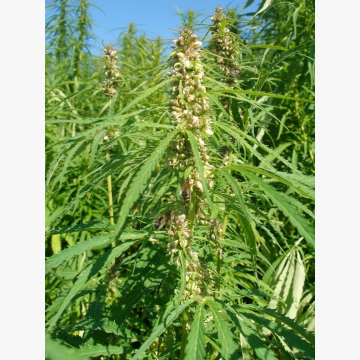
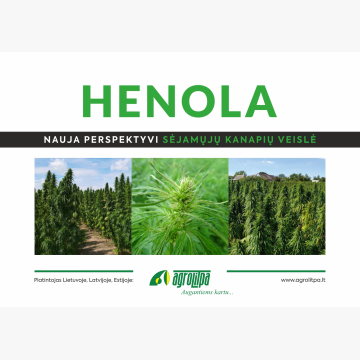
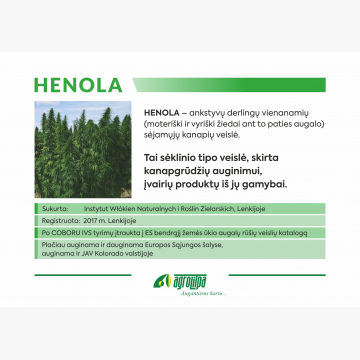
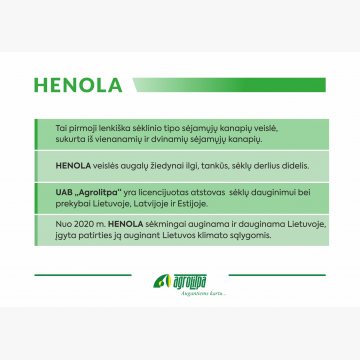
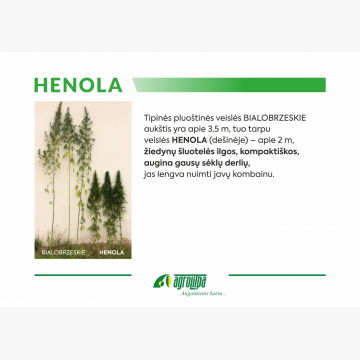
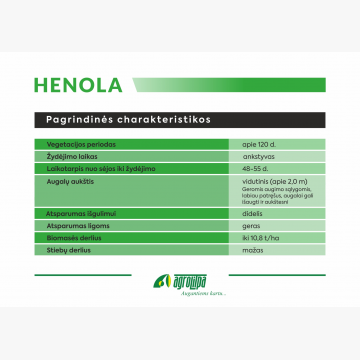
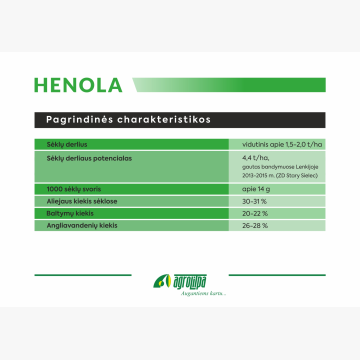
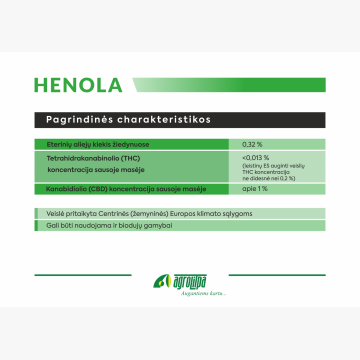
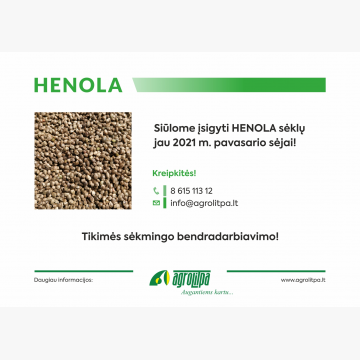











.JPG)

